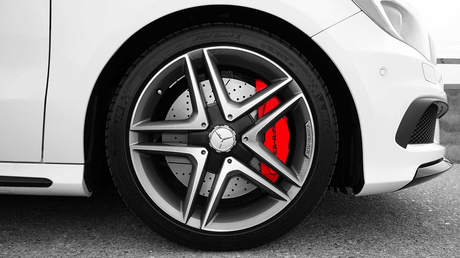
Across the world, automobiles have revolutionized the way that people travel and commute on a day-to-day basis, however, as vehicles become faster the risk of skidding and losing control of the car becomes greater and more dangerous for passengers. Anti-lock braking systems or ABS have made a major impact in boosting the safety of vehicles and have become mandated in many areas of the globe.
ABS is based on the principles of cadence braking and threshold braking and prevents the wheels from suddenly locking when the brakes are applied so that tractive contact is maintained with the road surface and the risk of skidding is avoided. ABS is especially useful in any form of a slippery surface, whether due to rain, snow, mud or even lost gravel. Although the concept of ABS has been around for a while, it was first put in use in cars in the 1970s and then too as a premium feature. Now, ABS has become a standard feature for cars, motorcycles, trucks and other vehicles that use wheels.
What You Should Know When Starting Your Business In ABS Market
Starting a business in the ABS market has great potential for success, which can be seen by the ABS market research that indicates that the global market is growing at a CAGR (compound annual growth rate) of 2.4 percent till 2022, reaching a value of $23 billion by 2021.
- The ABS market is driven by the growth of the markets for automobiles, electronics, and smart consumer appliances. While the market for automobiles is growing at a rate of 5-6 percent, the electronics, and small consumer appliances market is growing at a rate of 7 percent. The auto-electronics market is growing at a rate of 12-14 percent and is another potential market for ABS solutions.
- At a regional level, China is expected to continue to be a major driver for the ABS market in production and consumption. In North America and Europe, the automobile and appliances segments of ABS are expected to drive the demand for the market. In Asia, the electronics market is the main driver for ABS demand, followed by appliances and automobiles. The rise in the disposable income of the middle-class in the Asia region is further expected to drive the consumption of ABS in automobiles, appliances, and electronics.
- Raw material accounts for 86 percent of costs in Asia, 82 percent in North America and 80 percent in the EU. Supplier power in the ABS market is high in North America and the EU and low in Asia, while the buyer power is high in Asia, medium in the EU and low in North America. Developing regions of Asia are emerging as potential destinations for sourcing of ABS, due to forthcoming capacity additions, ease of duties on exports and the presence of a strong supply base.
- For buyers purchasing smaller volumes, the fixed margin-based pricing model is more popular, with the manufacturer aiming to maintain a profit margin of about 15-20 percent. As the prices of raw materials change, the manufacturer considers the overall input costs and applies margin based on the market condition. Other manufacturers opt for index-based pricing and pegging the price of ABS resin to the price of the raw material styrene since it constitutes 50 percent of the overall cost, due to this any change in the price of styrene is factored into the price of ABS resin at the review stage.
- Within the automobile sector, ABS plays several roles. Apart from acting as a secure and efficient braking system for the security of the vehicle, it also supports the trend of light-weight vehicles by replacing the heavy parts with ABS resins in wheel casings and dashboards as ABS resins are relatively more lightweight. Apart from cars and trucks, ABS plays an important role in motorcycles as well. By setting up an ABS on one or even both wheels, the traction of the wheels improve and braking becomes easier, making the motorcycle safer for travel. Since a motorcycle balances on only two wheels, having an anti-skid mechanism is vital for safety.
- The ABS market does face challenges, despite all the opportunities. There is a risk of saturation in highly mature markets where ABS has already been made mandatory for vehicles. Another challenge is the costs involved in the installation and upkeep of ABS. Drivers who are not familiar with using ABS are often hesitant to gain mastery over new technology when they have perfected their skills with typical vehicles. The risk of substitution in electronics and appliances is high since 3D printing with PLA resins is offering a cheaper and more customized alternative.
The ABS market offers a plethora of opportunities and has a great growth prediction and demand, making it a suitable option for entrepreneurs wishing to start a new business. Before launching a business in the ABS market, research the local market thoroughly and the competition in the field to ensure the success of the business in the long-term.
